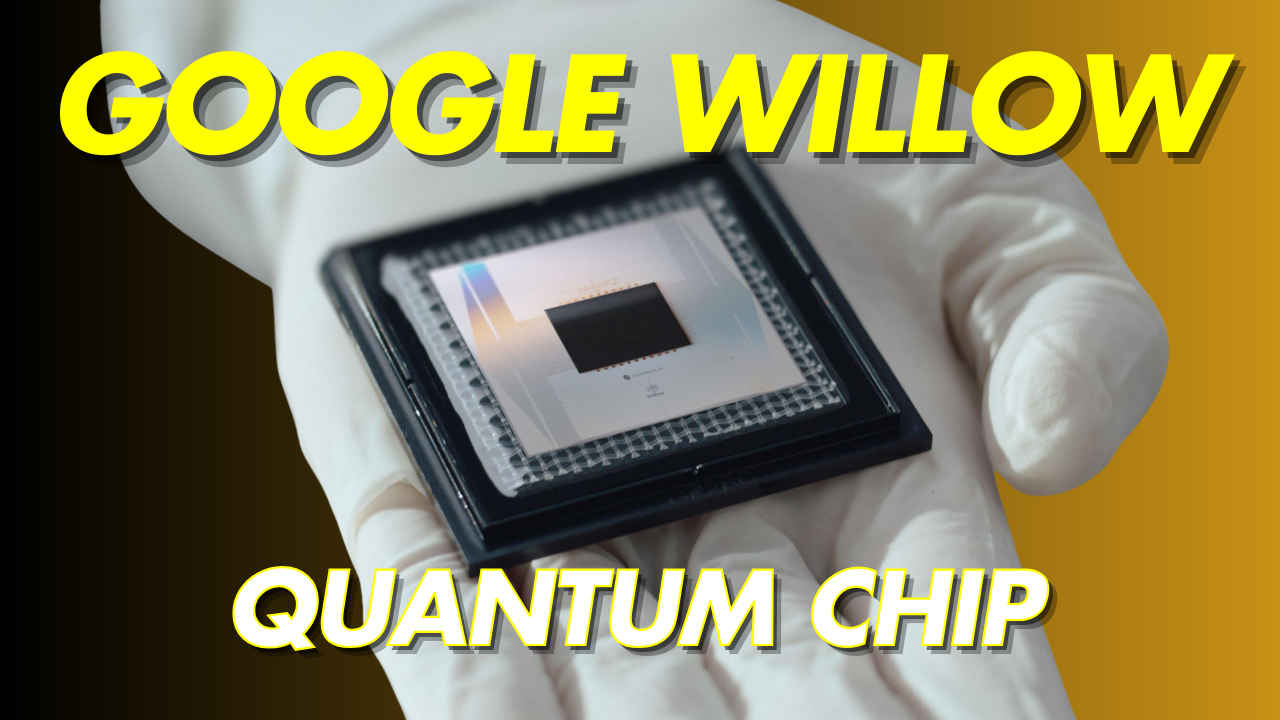Imagine solving a problem in five minutes that would otherwise take 10 septillion years—a number so vast it dwarfs the age of the universe (13.8 billion years) by a factor of a trillion. This isn’t science fiction; it’s the reality Google’s new quantum computing chip, Willow, is bringing to life. Announced in late 2023, Willow represents a watershed moment in quantum computing, blending raw computational power with groundbreaking error correction. But what does this mean for science, industry, and everyday life? Let’s unpack this milestone step by step.
Quantum Computing 101: Beyond Zeros and Ones
The Basics of Bits vs. Qubits
Classical computers process information using bits—tiny switches that are either 0 or 1. Quantum computers, however, use qubits, which exploit the weirdness of quantum mechanics to exist in multiple states at once (a phenomenon called superposition). This allows them to perform countless calculations simultaneously.
But there’s a catch: qubits are notoriously fragile. Environmental noise, temperature fluctuations, or even stray electromagnetic waves can disrupt their state, leading to errors. This fragility has long been the Achilles’ heel of quantum computing.
Entanglement: The Quantum “Spooky Action”
When qubits become entangled, the state of one instantly influences another, no matter the distance. This interconnectedness enables quantum computers to solve complex problems with unparalleled speed.
Inside Google’s Willow Chip: The 105-Qubit Powerhouse
What Makes Willow Special?
Willow is a 105-qubit superconducting processor, a significant leap from Google’s earlier 53-qubit Sycamore processor (2019). But qubit count alone isn’t the story. Willow’s architecture integrates advanced materials and cooling systems to maintain stability near absolute zero (-273°C), where superconductivity occurs.
The “Below Threshold” Breakthrough
For decades, quantum error correction (QEC) has been a holy grail. Traditional approaches required adding more qubits to detect and fix errors, but this often led to more complexity. Willow flips this script: by scaling up qubits strategically, it achieves “below threshold” error rates, meaning errors decrease as qubits increase. Think of it like noise-canceling headphones—the more qubits working in tandem, the quieter the system becomes.
Tackling the Error Problem: A 30-Year Challenge Solved
Why Errors Matter
Imagine solving a math problem where 10% of your calculations are wrong. In classical computing, error rates are negligible (one error per billion operations). For quantum systems, errors have been catastrophic—until now.
How Willow Reduces Errors Exponentially
Willow uses a surface code error correction method, arranging qubits in a grid where each checks its neighbors for inconsistencies. By scaling to 105 qubits, Willow creates redundancy without overcrowding, suppressing errors before they cascade. This “below threshold” operation means the system becomes more reliable as it grows—a game-changer for practical quantum computing.
Real-World Applications: From Labs to Life
A. Drug Discovery: Simulating the Unsimulatable
Classical computers struggle to model molecules like protein folding or enzyme interactions due to their quantum nature. Willow could simulate these in hours, accelerating drug development. For example, during COVID-19, researchers spent months simulating spike proteins; quantum computers might slash this to days.
B. Industrial Chemistry: Greening Ammonia Production
The Haber process, which produces ammonia for fertilizers, consumes 1-2% of global energy. Quantum simulations could pinpoint catalysts to make this process energy-efficient, reducing carbon emissions and costs.
C. Sustainable Tech: Better Batteries and Clean Energy
Battery Design: Quantum models could reveal new materials for longer-lasting lithium-ion batteries or solid-state alternatives.
Nuclear Fusion: Simulating plasma behavior in reactors like ITER could bring us closer to limitless clean energy.
D. Climate Modeling and Logistics
Quantum algorithms could optimize supply chains, predict climate patterns with precision, or revolutionize AI training.
The Road Ahead: Google’s Five-Year Vision
From Lab to Reality
Google’s Quantum AI team aims to transition Willow from experimental feats (like their 10-septillion-year benchmark) to solving tangible problems by 2028. Partnerships are already budding:
Pharma Collaborations: Companies like Merck and Novartis are exploring quantum-driven drug discovery.
Energy Sector: Startups focused on fusion energy are leveraging quantum simulations.
Challenges Remain
Scalability: Adding qubits without compromising stability.
Cost: Supercooled systems are expensive to build and maintain.
Talent Gap: The field needs more quantum engineers and programmers.
Competitive Landscape
IBM’s 433-qubit Osprey and startups like Rigetti are pushing boundaries, but Willow’s error correction gives Google an edge. Meanwhile, China’s Jiuzhang photonic quantum computer focuses on a different approach, highlighting a global race.
Ethical and Societal Implications
The Quantum Divide
Nations and corporations racing for “quantum supremacy” could widen technological inequalities. Regulatory frameworks will be crucial to ensure equitable access.
Security Concerns
Quantum computers could crack today’s encryption, prompting a shift to quantum-safe cryptography. The NSA has already begun this transition.
References & Further Reading
Google Quantum AI Blog (2023)
Nature Journal: “Advances in Quantum Error Correction”
IBM Research: Quantum Roadmap
World Economic Forum: “Quantum Computing and Global Security”








0 Comments